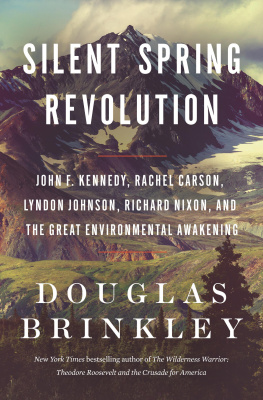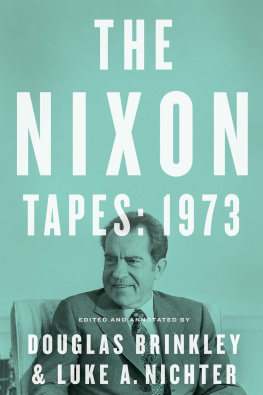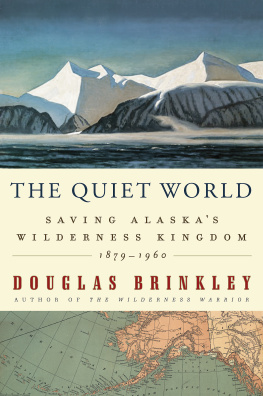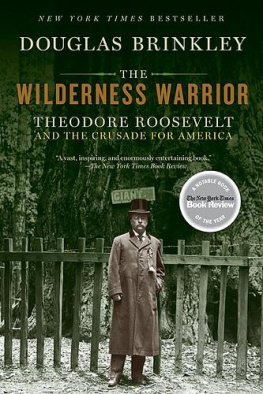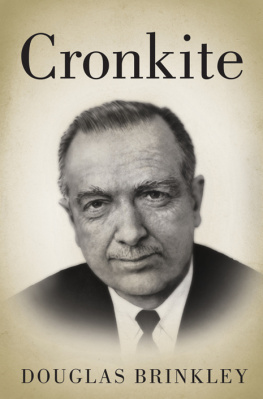Douglas Brinkley - Rightful Heritage: The Renewal of America
Here you can read online Douglas Brinkley - Rightful Heritage: The Renewal of America full text of the book (entire story) in english for free. Download pdf and epub, get meaning, cover and reviews about this ebook. year: 2016, publisher: HarperCollins, genre: Non-fiction. Description of the work, (preface) as well as reviews are available. Best literature library LitArk.com created for fans of good reading and offers a wide selection of genres:
Romance novel
Science fiction
Adventure
Detective
Science
History
Home and family
Prose
Art
Politics
Computer
Non-fiction
Religion
Business
Children
Humor
Choose a favorite category and find really read worthwhile books. Enjoy immersion in the world of imagination, feel the emotions of the characters or learn something new for yourself, make an fascinating discovery.

- Book:Rightful Heritage: The Renewal of America
- Author:
- Publisher:HarperCollins
- Genre:
- Year:2016
- Rating:5 / 5
- Favourites:Add to favourites
- Your mark:
- 100
- 1
- 2
- 3
- 4
- 5
Rightful Heritage: The Renewal of America: summary, description and annotation
We offer to read an annotation, description, summary or preface (depends on what the author of the book "Rightful Heritage: The Renewal of America" wrote himself). If you haven't found the necessary information about the book — write in the comments, we will try to find it.
Rightful Heritage: The Renewal of America — read online for free the complete book (whole text) full work
Below is the text of the book, divided by pages. System saving the place of the last page read, allows you to conveniently read the book "Rightful Heritage: The Renewal of America" online for free, without having to search again every time where you left off. Put a bookmark, and you can go to the page where you finished reading at any time.
Font size:
Interval:
Bookmark:


TO MY BLESSED CHILDREN:
BENTON, JOHNNY, AND CASSADY

I see an America whose rivers and valleys and lakeshills and streams and plainsthe mountains over our land and natures wealth deep under the earthare protected as the rightful heritage of all the people.
FRANKLIN D. ROOSEVELT, NOVEMBER 2, 1940, CLEVELAND, OHIO
Each town should have a park, or rather a primitive forest, of five hundred or a thousand acres, where a stick should never be cut for fuel, a common possession forever, for instruction and recreation.
HENRY DAVID THOREAU, JOURNAL, OCTOBER 15, 1859
CONTENTS
I
There was never a eureka moment that transformed Franklin D. Roosevelt into a dyed-in-the-wool forest conservationist. His passion for the natural world was instead an emotion, inclination, and inherited disposition. Throughout his life he firmly believed that natural surroundings influenced a persons health, social behavior, and mood for the better. Franklin Delano Roosevelts family owned land in and around Poughkeepsie and along the banks of the Hudson River for four generations, his wife, Eleanor Roosevelt, wrote, but even before that his Roosevelt ancestors lived just a bit farther down the Hudson River... so the river in all of its aspects and the countryside as a whole were familiar and deeply rooted in my husbands consciousness.
If tourists with an active imagination started at the Hudson Rivers headwaters in a lake high in the Adirondacks, and traveled 315 miles south to New York Bay, theyd see a grand cavalcade of American history unfold. To Roosevelt, the Hudson, a tidal river where Atlantic seawater flooded far upstream, was the great wellspring of the nation. The river was the first in America to be explored by Europeans, its waters beheld the first steamships to operate successfully, and its banks were the birthplace of the nations first lucrative railroad.
Americas only four-term president was born on January 30, 1882, in the provincial village of Hyde Park, New York, amid rich Dutchess County farm country. His parents, James and Sara Roosevelt, were both from prominent Hudson Valley families, on opposite sides of the river. The tranquil beauty of the Hudson River stitched the families together: the Roosevelts on the east side (Hyde Park) and the Delanos on the west (Newburgh). In 1880, James Roosevelt was a well-preserved widower of fifty-fourwith one child, a son named James, who was known as Roseywhen he married Sara Delano, a woman twenty-six years his junior. Franklin, their only child together, was named after Saras favorite uncle.
James Roosevelt graduated from Union College in 1847 and Harvard Law School four years later. He increased his inherited fortune through investments in real estate, bituminous coal, banking, and railroads. Fancying himself a country squire, he had the leisure of spending quality time with little Franklin, exploring nature, teaching him to honor trees as the noblest and weightiest of all living organisms, to respect the ethics of land stewardship, and to be a country gentleman, too. Franklins nickname for his father was Popsy, a term of endearment. Mr. James passed on intact his own fondness for the outdoors, historian Geoffrey C. Ward explained. He loved trees, for example, knew their varieties, would allow none to be cut unless they were dead or diseased, and he made sure his son felt the same way.
In 1867 James Roosevelt had purchased an estate in Hyde Park. He later acquired additional acreage adjacent to it on both sides of the Albany Post Road.

Springwood, Franklin Roosevelts lifelong home in Hyde Park, New York, was photographed from the air in 1932, looking to the southwest. The house is nestled among the trees (center). Franklin sailed and ice-boated on the Hudson River (at top), while his mother took pride in the formal rose gardens (right).
Whenever Franklin played at Springwood, collecting leaves in the hemlock forest, tobogganing down snowy hills, catching minnows in Elbow Creek, or chasing rabbits along the riverfront, he was living what Leo Marx calledin his study of agrarian romanticism, The Machine in the Gardenthe pastoral ideal.
As an only child tutored at home, Franklin had only a few playmates in Hyde Park: namely Edmond Rogers, Mary Newbold, and his niece Helen Roosevelt. Instead, during his leisure hours, Franklin roamed the estates grounds, nurtured by chittering squirrels and drumming doves. Wandering around the terraced hills that rose from the Hudson River to Springwoods Main House, tracking robins and vireos, turning horses out to pasture, he developed an almost tangible intimacy with the land, never taking the staggering beauty of the Hudson River Valley for granted. Dutchess County had once been inhabited by Algonquian-speaking Wappinger Indians, one of the northernmost of the Delaware peoples. Young Franklin often scoured his property for artifacts and relics.
Whenever Franklin arrived home after one of his Indian relic hunts, invariably scuffed up, his mother, Sara Delano Roosevelt, would ask him scoldingly and in alarm, Where have you been?
Oh, out in the woods, was the usual answer.
What doing? Sara would ask.
Climbing trees.
In the 1880s there was a backlash in some circles against rapacious industrialists who mauled landscapes, like those of the Hudson River Valley and the Adirondacks, for timber and minerals. Painter Thomas Cole, in his seminal Essay on American Scenery, bemoaned what he called the ravages of the axe, which were destroying pastoral landscapes. Deeply concerned about deforestation, the Roosevelts wanted state regulations and industry safeguards in place to fight wanton extraction. While much of nineteenth-century New York City smelled of smoke, coal, and oil, FDRs upstate environment during his childhood was pine-scented. As landscape perservationsists his parents sought to keep the Hudson River Valley green for future generations.
Since most of the land in New York where reforestation was especially needed during the Gilded Age was in the hands of private owners, the most practical solution to saving forests was acquiring more public lands. In 1885, the state launched two major forest preserves, which covered nearly a million acres in the Adirondacks and, on a much smaller scale, the Catskills. Unfortunately, the law was weak. In 1894, when FDR was twelve, the state superseded it with an amendment mandating that all state-owned forests be forever kept as wild. After that, forest preserves were regulated to protect nature, first and foremost. Further, they were part of a movement in New York that allowed them to exist amid privately owned parcels in which commercial development would be largely restricted by the state. As these innovative parks coalesced, they were located across massive tracts in the Catskills and Adirondacks. Chopping timber in the forever wild forest preserves in the parks was banned outright, because of the amendment. On the private lands in the parks, it was overseen by the state to ensure conservation was at least considered. These developments in forestry, followed closely by the Roosevelt family while Franklin was growing up, gave birth to the modern wilderness preservation movement.
The U.S. Department of Agriculture (USDA) joined the state of New York in visionary protection of American forestlands. At the prodding of grassroots activists and conservation-minded presidents such as Benjamin Harrison and Grover Cleveland, Congress preserved vast forests in the West. On the intellectual front, George Perkins Marshs 1864 environmental manifesto
Next pageFont size:
Interval:
Bookmark:
Similar books «Rightful Heritage: The Renewal of America»
Look at similar books to Rightful Heritage: The Renewal of America. We have selected literature similar in name and meaning in the hope of providing readers with more options to find new, interesting, not yet read works.
Discussion, reviews of the book Rightful Heritage: The Renewal of America and just readers' own opinions. Leave your comments, write what you think about the work, its meaning or the main characters. Specify what exactly you liked and what you didn't like, and why you think so.

